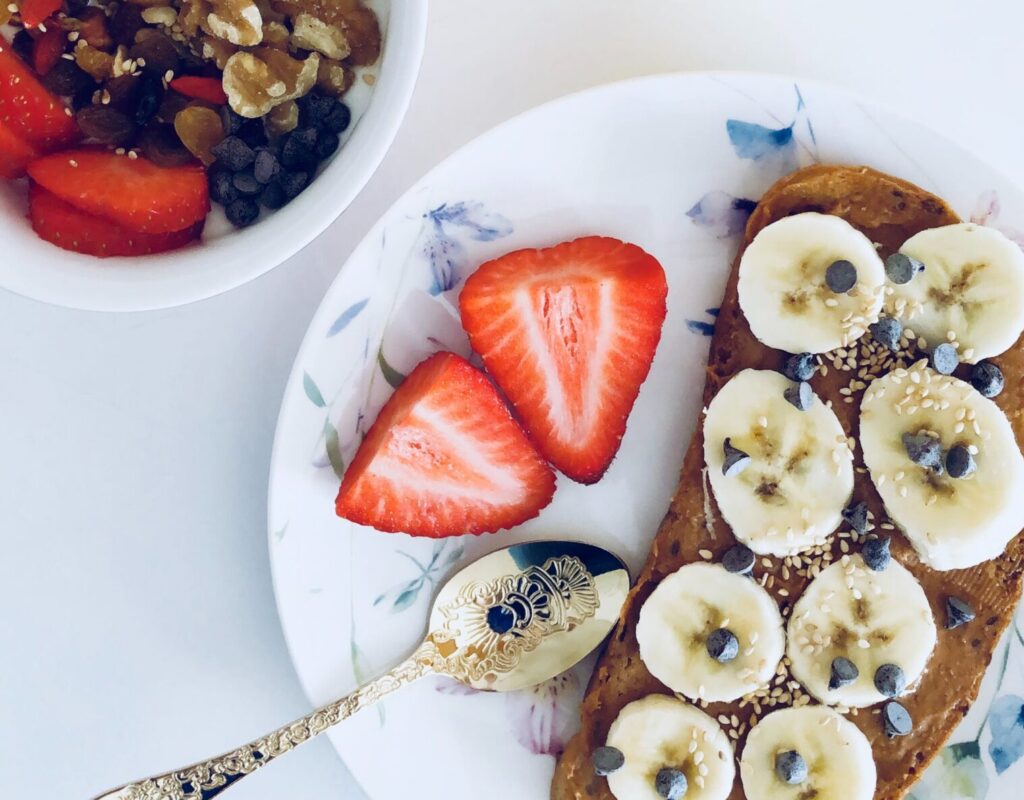Yoga for Stress Relief: 6 Poses to Find Balance
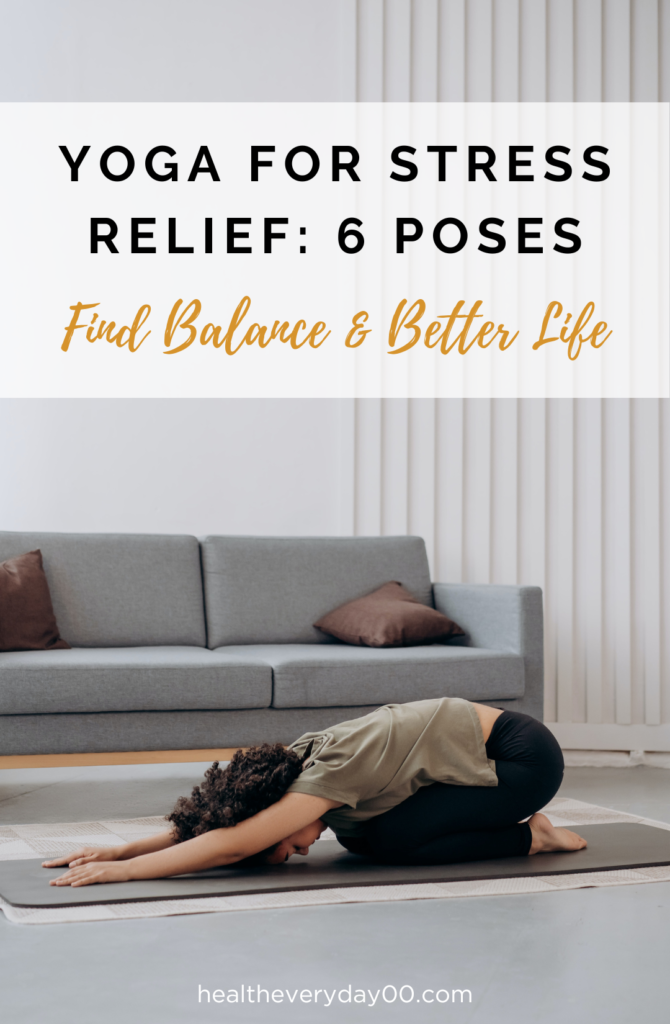
Introduction
In today’s fast-paced world, stress has become a constant companion for many individuals. From demanding work schedules to personal commitments, it’s no wonder that finding balance and relaxation has become increasingly difficult. Yoga, an ancient practice that promotes mindfulness, flexibility, and strength, can be a highly effective solution to the growing problem of stress. In this article, we will explore the benefits of yoga for stress relief and introduce you to six poses that can help you find balance in your life.
The Benefits of Yoga for Stress Relief
Yoga offers numerous benefits that can contribute to stress reduction and overall well-being. Here are two major areas in which yoga can help:
Mental Health Improvements
Yoga focuses on deep breathing, mindfulness, and meditation, which are all crucial in reducing stress. These techniques help quiet the mind, improve focus, and induce a sense of calm and relaxation.
Physical Health Benefits
Yoga helps in improving flexibility, strength, and balance. It also increases blood circulation and supports the body’s natural healing process. All of these physical benefits contribute to stress relief and an overall sense of well-being.
6 Yoga Poses to Find Balance
Here are six yoga poses that can help you relieve stress and find balance:
1. Child’s Pose (Balasana)
This restorative pose is perfect for moments when you need to pause and reconnect with yourself.
How to do :
- Begin by kneeling on your mat with your big toes touching and your knees hip-width apart.
- Sit back on your heels.
- Exhale as you fold forward, bringing your forehead to the mat.
- Extend your arms alongside your body, with your palms facing down.
- Breathe deeply, allowing yourself to let go of any tension, and hold the pose for a few minutes.
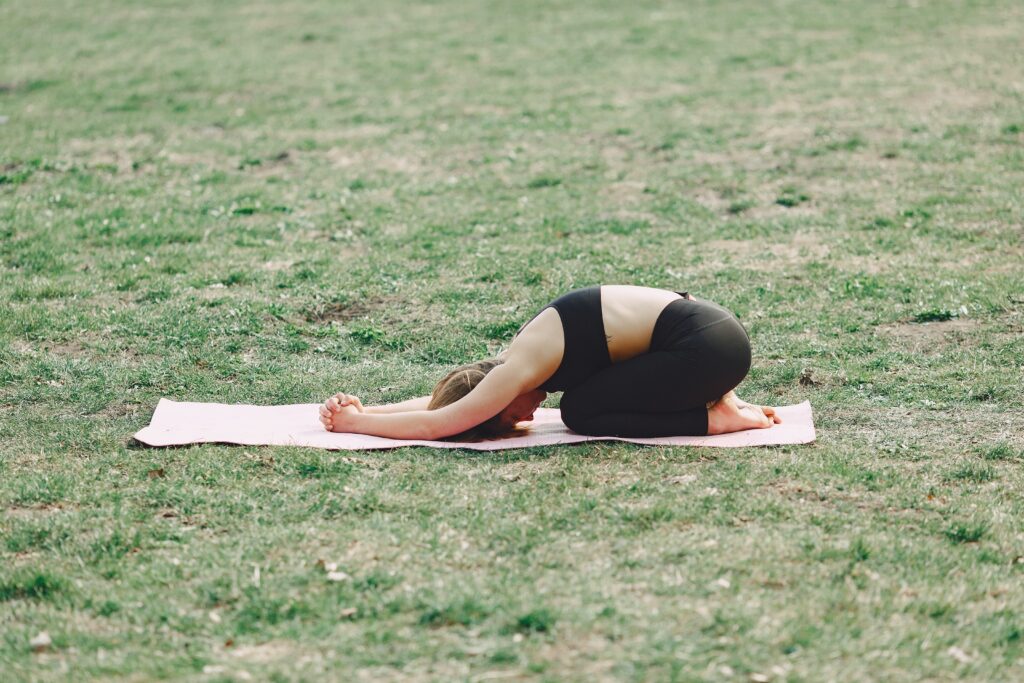
2. Cat-Cow Pose (Marjaryasana-Bitilasana)
This gentle flow helps to release tension in the spine and neck.
How to do :
- Start on your hands and knees, with your wrists directly under your shoulders and your knees under your hips.
- Inhale as you drop your belly towards the mat and lift your chest and tailbone towards the sky, entering Cow Pose.
- Exhale as you round your spine, tucking your tailbone and bringing your chin towards your chest, entering Cat Pose.
- Continue to flow between these poses for several breaths, focusing on releasing tension with each movement.
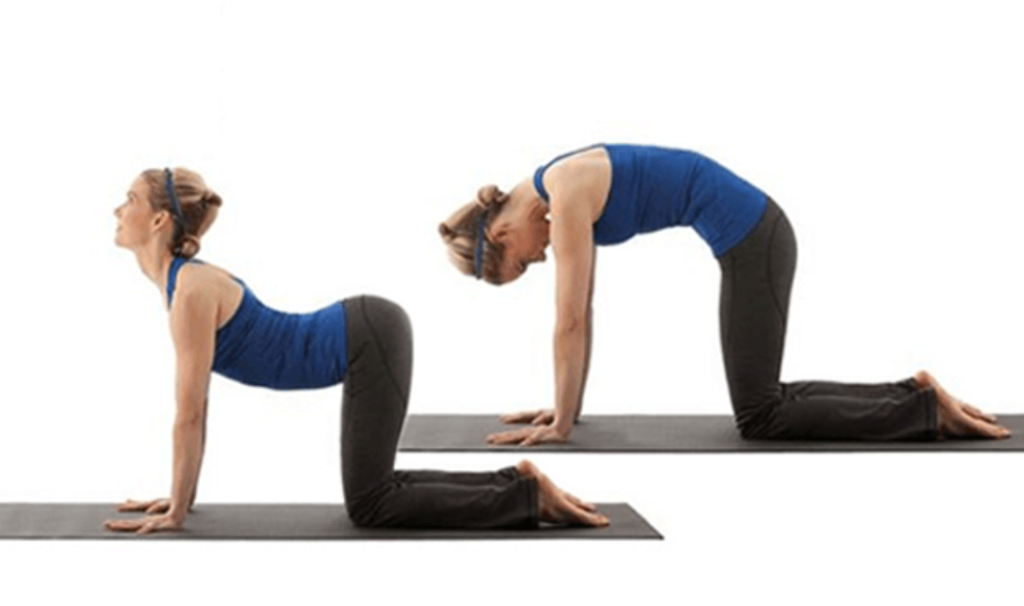
3. Seated Forward Bend (Paschimottanasana)
This calming pose stretches the spine, shoulders, and hamstrings.
How to do :
- Sit on your mat with your legs extended in front of you and your feet flexed.
- Inhale as you lengthen your spine and raise your arms overhead.
- Exhale as you fold forward from your hips, reaching for your toes or shins.
- Allow your head to relax and your breath to deepen as you release tension in your muscles.
- Hold this pose for several breaths, gradually deepening the stretch with each exhale.

4. Bridge Pose (Setu Bandha Sarvangasana)
Bridge Pose is a gentle backbend that can help alleviate anxiety and stress.
How to do :
- Lie on your back with your knees bent and feet hip-width apart, placing your arms alongside your body with your palms facing down.
- Press your feet into the mat and lift your hips towards the sky, engaging your glutes and hamstrings.
- Clasp your hands together beneath your body, rolling your shoulders under to open your chest.
- Breathe deeply and hold the pose for several breaths.
- Slowly lower your hips back down to the mat as you exhale.
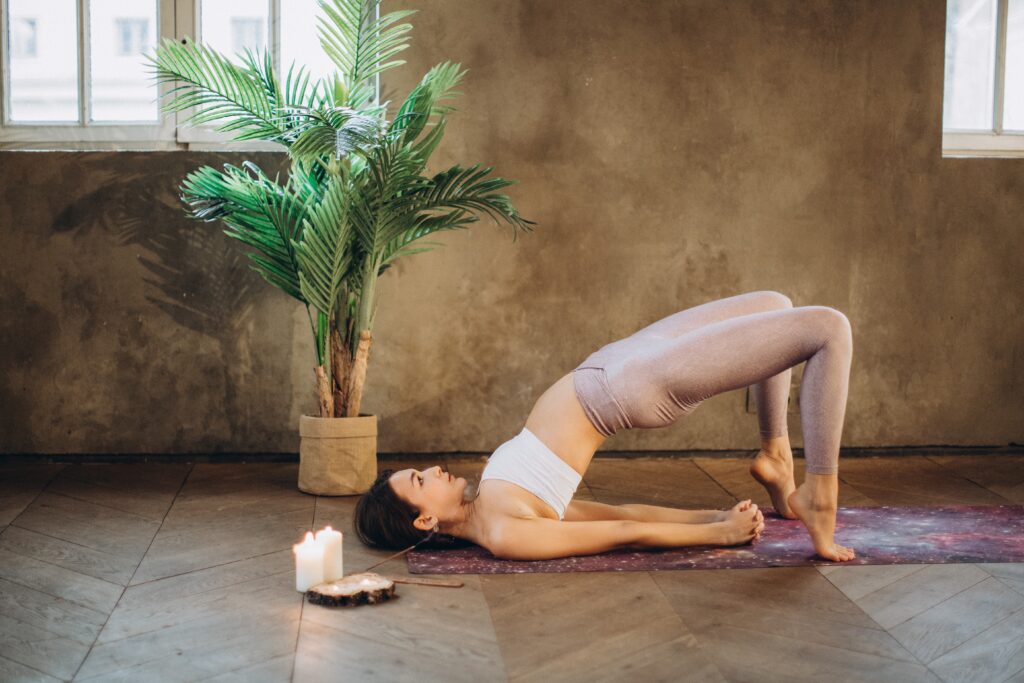
5. Legs-Up-The-Wall Pose (Viparita Karani)
This restorative inversion can help relieve tension and promote relaxation.
How to do :
- Place a folded blanket or bolster close to a wall.
- Sit sideways on the support with your hip against the wall.
- Swing your legs up the wall as you lie back onto the mat.
- Adjust your position so your hips are supported and your legs are resting comfortably against the wall.
- Close your eyes and focus on your breath as you hold this pose for several minutes.
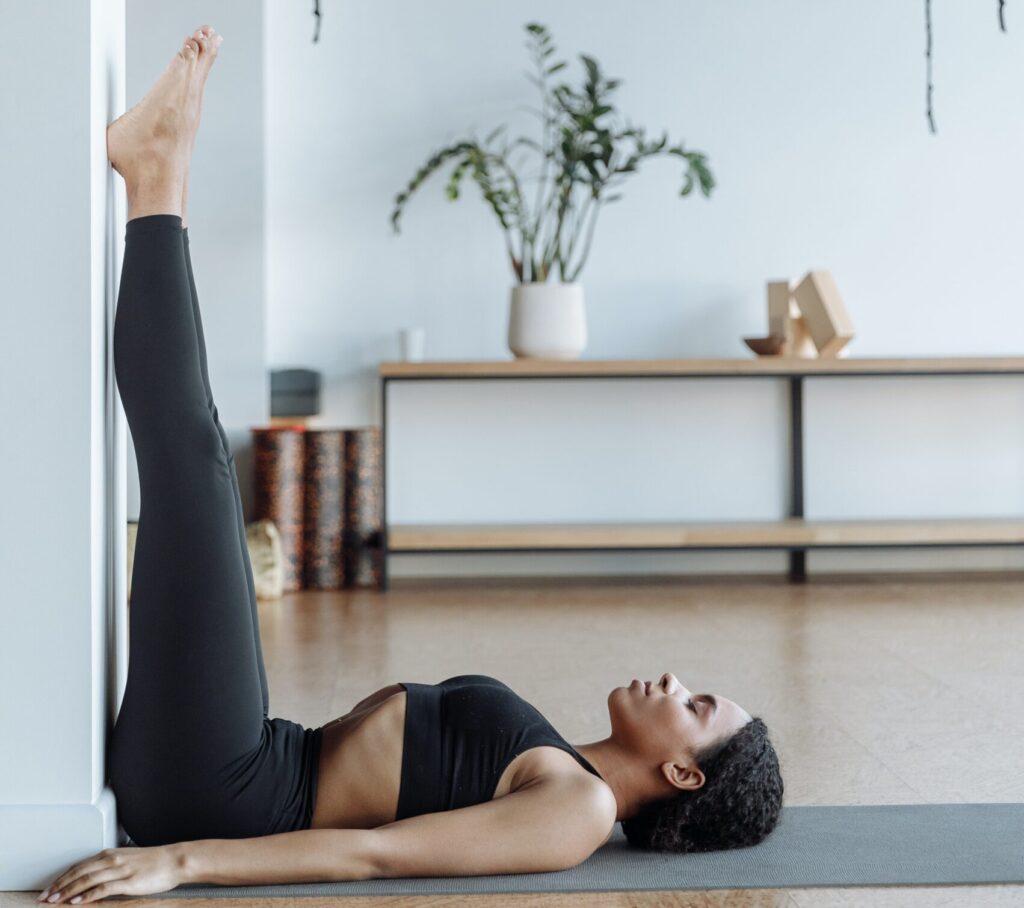
6. Corpse Pose (Savasana)
End your yoga practice with this deeply relaxing pose.
How to do :
- Lie on your back with your arms resting alongside your body, palms facing up.
- Allow your legs to relax and your feet to fall open.
- Close your eyes and focus on your breath, releasing any remaining tension in your body.
- Stay in this pose for at least five minutes to fully experience its calming effects.

Enhancing Your Yoga Practice for Optimal Stress Relief
As you have now learned six yoga poses for stress relief, here are a few additional tips to help you further enhance your practice and maximise the benefits:
Breath Awareness
Paying close attention to your breath during your yoga practice can help you stay present and focused. Inhale deeply through your nose and exhale fully, allowing your breath to guide your movements. Use techniques like Ujjayi breathing (also known as ocean breath) to create a smooth, steady rhythm.
Mindfulness
Practising mindfulness during your yoga session can help you fully connect with your body and emotions. Stay present in each pose, observing any sensations or thoughts that arise without judgment. This will help you develop a deeper understanding of your stress triggers and learn to release them.
Gentle Warm-Up
Before beginning your yoga practice, take a few minutes to warm up your body with gentle movements like neck rolls, shoulder shrugs, and hip circles. This will help prepare your muscles for the poses and prevent injuries.
Hold Poses Longer
To deepen your practice and enhance relaxation, try holding each pose for a longer duration. Gradually increase the amount of time spent in each pose, allowing your body to relax and your mind to quieten further.
Practice Yoga Nidra
Yoga Nidra, or yogic sleep, is a guided relaxation technique that can be practised after your yoga session or on its own. It promotes deep relaxation and helps to release stress and tension from the body and mind.
Remember, consistency is key when practising yoga for stress relief. Establish a regular practice routine and continue to explore new poses and techniques to further enhance your experience. As you deepen your connection to your body and breath, you’ll find greater balance and relaxation in your daily life.
How to Integrate Yoga into Your Routine
1. Start with a Consistent Schedule
Incorporate yoga into your daily routine by setting aside a specific time each day for your practice. Consistency is key in forming a new habit and reaping the benefits of stress relief.
2. Create a Calming Environment
Find a quiet, comfortable space in your home where you can practice yoga undisturbed. Consider adding calming elements such as candles, soft lighting, or soothing music to enhance your relaxation.
3. Consider Yoga Accessories
Incorporating these accessories into your yoga practice can help you get the most out of your stress-relieving poses and make your sessions even more enjoyable and effective. Remember to always listen to your body and choose the accessories that best suit your needs and preferences.
Yoga Mat
Invest in a high-quality, non-slip yoga mat that provides adequate cushioning and support for your joints. Eco-friendly options made from natural rubber or cork are also available.
Yoga Blocks
These can be made from foam, cork, or wood and are used to provide extra support, stability, and alignment in various poses. They are especially helpful for beginners or those with limited flexibility.
Yoga Strap
A strap can help you deepen your stretches and improve your flexibility. It’s particularly useful for poses where you need to reach your feet or maintain alignment, such as in Seated Forward Bend.
Bolster
Bolsters are firm, cylindrical cushions that can provide support and comfort in restorative poses, like Legs-Up-The-Wall Pose. They can also help you modify certain poses to suit your flexibility or comfort level.
Yoga Blanket
A soft, foldable blanket can be used for extra cushioning, warmth, or as a prop to support your body in certain poses.
Meditation Cushion
A cushion specifically designed for meditation can help you maintain a comfortable seated position during your practice, particularly during the mindfulness and meditation components of yoga.
Eye Pillow
An eye pillow filled with lavender or flax seeds can help you relax and deepen your experience in Corpse Pose by providing gentle pressure on your eyes and blocking out light.
Yoga Wheel
A yoga wheel can be used to enhance your flexibility, particularly in backbends, and provide support during challenging poses. The wheel helps to release tension in the back, chest, and shoulders, making it a great accessory for stress relief. It can also assist in deepening stretches and improving balance. To use a yoga wheel, simply place it on your mat and position your body over it, allowing the wheel to support you as you move through various poses.
Suggested Supplements for Stress Relief
In addition to practising yoga, consider incorporating stress-relieving supplements into your routine, such as:
Ashwagandha
Ashwagandha is an adaptogenic herb commonly used in Ayurvedic medicine. It helps your body adapt to stress by balancing cortisol levels and supporting the adrenal glands. Ashwagandha has also been shown to reduce anxiety and improve overall mental well-being. It is usually available in capsule, tablet, or powdered forms.
L-Theanine
L-Theanine is an amino acid found naturally in green tea. It promotes relaxation without causing drowsiness and has been shown to increase the production of alpha brain waves, which are associated with a relaxed and focused state. L-Theanine can be taken as a supplement in capsule or tablet form.
Magnesium
Magnesium is an essential mineral that plays a critical role in over 300 biochemical reactions in the body. It is vital for the proper functioning of the nervous system and has been shown to reduce stress and anxiety. Magnesium supplements are available in various forms, including magnesium citrate, magnesium glycinate, and magnesium oxide. It’s important to choose a highly absorbable form and consult a healthcare professional for the appropriate dosage.
B-complex vitamins
B vitamins are essential for optimal brain function and energy production. They help to support the nervous system and may reduce stress, anxiety, and fatigue. A B-complex supplement typically includes vitamins B1, B2, B3, B5, B6, B7, B9, and B12 in a single pill or capsule.
Omega-3 fatty acids
Omega-3 fatty acids, found in fish oil, krill oil, and certain plant-based sources, are essential for brain health and may help to reduce inflammation and improve mood. Research has shown that omega-3 supplementation can help alleviate symptoms of anxiety and depression. Look for a high-quality supplement with a good balance of EPA and DHA, which are the two primary types of omega-3 fatty acids.
Always remember to consult a healthcare professional before adding any supplements to your routine, as individual needs may vary, and some supplements may interact with medications or have contraindications for certain health conditions.
Conclusion
Yoga can be an incredibly effective tool for managing stress and finding balance in your life. By incorporating the six poses we’ve discussed, along with maintaining a consistent practice and creating a calming environment, you can harness the power of yoga for stress relief. Don’t forget to consider adding supplements to further support your journey towards a more balanced, stress-free life. Remember, it’s essential to listen to your body and consult with a healthcare professional as needed.

